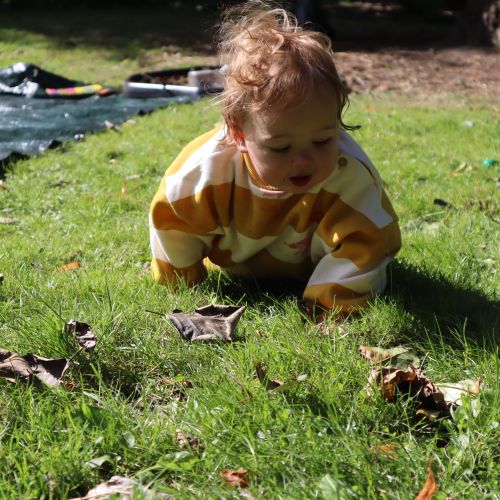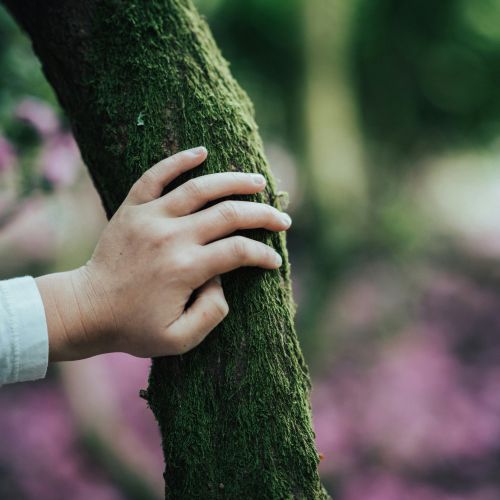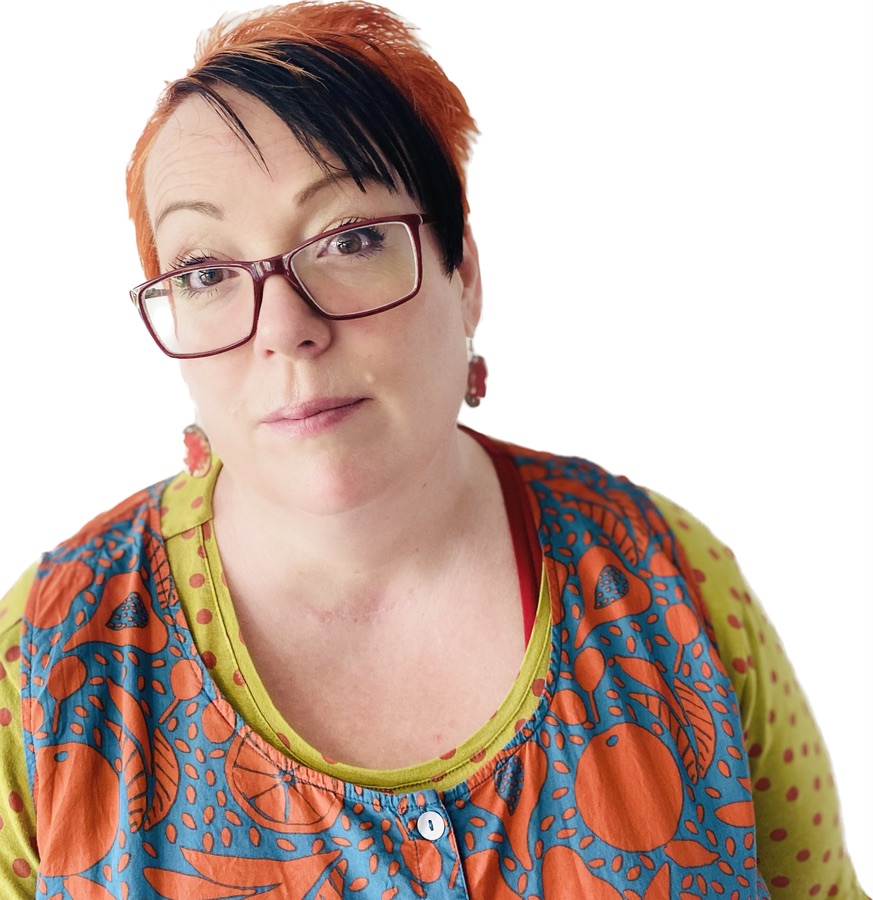Blog
Thinking Together with Children and Nature
Nature exists everywhere! It is in the cracks of the pavements where the dandelions and mosses thrive; in the world beneath our feet along with the worms and fungi; and above in the air that we each breathe with the pollinators and the clouds above. It doesn’t matter if you are in an inner city or rural countryside-based setting – nature is to be found wherever we are, and we are not separate from it but a part of this great ecosystem of Earth.
In our work alongside young children, we can notice and increase our sensitivity to the patterns and rhythms of nature through:
- Becoming attuned and developing a listening pedagogy as a way of developing an empathy towards living things;
- Developing the ecological enquiries and working theories of young children;
- Cultivating dispositions of care and respect for all forms of life;
- Understanding the time of nature, how nature transforms, moves and surprises us, building our own knowledge of the cycles and systems of nature.

A baby wandering through the grass during autumn.

A tree branch.
Slow Pedagogy
In her book, Slow Knowledge and the Unhurried Child, Alison Clarke (2023) considers the
characteristics of a slow pedagogy which chimes for me when thinking about increasing our
sensitivity and becoming more attuned with both nature and the thinking of young children. She
describes a slow pedagogy as:
- ‘Being with’ and attentive to the rhythm of the children, and adults and materials
- Involving rapid, intense moments as well as a slowing down of pace
- Making time for listening and collaboration
- Celebrating the group as well as the individual
- Valuing play and the present moment
- Taking the long way, and cultivating over time
- Valuing the difficult to measure
- Seeking to enable deep discovery and strengthening of relationships
Clarke (2023: 49)
When we slow down and look closely together with children, we become attuned and more able to perceive the complex landscape of mosses within the mortar of bricks that is akin to wild rainforest but in miniature scale or the sculptural forms of the dandelion clocks growing up in the cracks and crevices in the tarmac. Nature is everywhere, so being with it and attentive to it requires a slowing down of pace to make time for listening and thinking together to notice natures aesthetic, beauty and rhythms. In doing so, we hear the wonderings of the children and the questions they ask with their eyes, their hands, their ears as well as with their words.
Reflect on - How do you slow down to notice the world (the macro and microscopic) with your children?
Children’s Wonderings and Working Theories
We can observe the working theories at play in the enquiries of the children as they encounter, play and think in and with nature. Each child is affected by encounters with nature in diverse ways. Each child will have a distinct set of lenses for perceiving, which result in different perspectives, ideas and working theories. These provisional theories of young children are described as representing the tentative and evolving understandings and ideas of children (and adults) as they engage with others to think, ponder, imagine, wonder, and make sense of the world (Hedges, 2022).
We can see these working theories emerge as children pick up the transforming leaves of Autumn, wondering why they are turning brown and falling from the trees or when they wonder if the snails in the bushes are friends with the spiders? Sometimes these working theories are verbalised, and at other times, they may just remain as unspoken thoughts.
When working with children’s ideas related to natural world, then the sharing of their individual and sometimes contrasting ideas and working theories of each individual are important to the wider group context of learning and thinking together. The simple act of the sharing of ideas and thoughts within the social context of a setting are often caught like viruses and spread like wildfire amongst the children in a kind of positive contagiousness. In the pre-schools of Reggio Emilia, the Italian term ‘confronto’ is used to describe this dialectic exchange of diverse ideas which lead to the advancement in knowledge and of actions of all (Giamminuti et al, 2024). They consider it as a generous and generative attitude in which the acknowledgment and acceptance of differences in thinking develops empathy, care and respect of each other.
When Adam at Madeley Nursery School in Telford & Wrekin shared his working theory that the trees in his nursery garden were singing to each other, his idea was ‘caught’ by his friends, who became his fellow co-researchers, all investigating the sounds of trees. His educator asked; ‘what do you think you need to investigate your idea?’. And the children replied, ‘Things like pipes and tubes to attach to the trees so we can listen in on them’. This began a long-term enquiry in which the children used their listening pipes to find out how the nursery garden trees communicated with each other. It is the kind of question or enquiry scientists might undertake, and of course, we now know that trees do indeed communicate with each other through what has been called the wood-wide-web of the mycorrhizal fungal networks that connect the trees within a forest. Adam’s idea might have at first appeared as almost whimsical, but it is exactly the kind idea or line of enquiry which leads to scientific discoveries because he is imagining what is possible and looking at the world from a different point of view.
Reflect on – In attuning to your children, what ideas or working theories do they have about the natural world around them in your setting?
Rewilding your pedagogy
In attuning to children relating to nature and the world, as educators we are attending to the relationship of understanding developed in embodied experiences, within environments and encountering materials of many kinds. In a way we are not just observing what children ‘do’ to materials such as leaves or twigs but also what these materials ‘do’ to the children (Pacini-Ketchabaw et al, 2017).
Rewilding at its very essence is about restoring natural processes such as the rhythms, flows, actions, exchanges that have shaped our planet for millennia. In terms of rewilding our pedagogy, it is about ensuing that our practice is deeply connected to the living world.
In their fascinating paper, Wild Pedagogies, Jickling et al (2018) raise six touchstones that I share in Figure 1, with summary descriptors and some final reflective questions that I have adapted and added to for all early childhood educators interested in rewilding their outdoors but also their pedagogy (Keyte-Hartland, 2024).
References
Clarke, A. (2023). Slow Knowledge and the Unhurried Child: Time for Slow Pedagogies in Early Childhood Education. Oxon: Routledge.
Giamminuti, P. Cagliari, C. Giudici, & Strozzi, P. (2024) The role of the pedagogista in Reggio Emilia: Voices and ideas for a dialectic educational experience. Oxon: Routledge.
Hedges, H. (2022). Children’s Interests, Inquiries and Identities: Curriculum, Pedagogy, Learning and Outcomes in the Early Years. Oxon: Routledge.
Jickling, B., Blenkinsop, S., Morse, M. and Jensen, A. (2018). Wild pedagogies: six initial touchstones for early childhood environmental educators. Australian Journal of Environmental Education, Vol. 34 (2) pp 159–171.
Keyte-Hartland, D. (2024). Vitality and liveliness in curriculum: rewilding pedagogy. Early Education Journal. No. 103. Summer 2024. pp 12-15.
 |
Debi Kayte-Hartland Associate Consultant with Early Education
|
